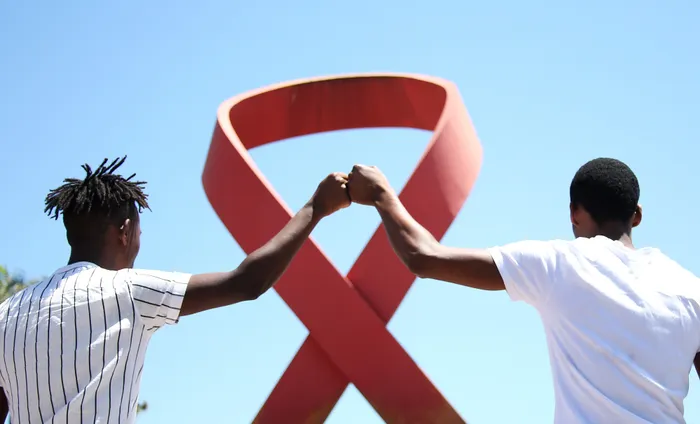South Africa’s HIV Response: Hope, Tools, and Resolve
HEALTH

South Africa has the world’s largest HIV treatment programme, with over 5.5 million people receiving antiretrovirals (ARVs). Yet we still see more than 100 000 new HIV infections each year. That is unacceptable — and preventable.
Image: Tumi Pakkies/ Independent Newspapers
Earlier this month, more than 3,600 scientists, activists, policymakers, and journalists gathered in Kigali, Rwanda, for the 13th International AIDS Society (IAS) Conference on HIV Science.
It was the first time this major global event took place in an African city outside South Africa, marking a powerful recognition of the continent’s critical role in the global HIV response.
The conference came on the heels of deeply concerning news: in January, the US government announced sharp cuts to funding for the President’s Emergency Plan for AIDS Relief (PEPFAR), a move that cast a long shadow over the global fight against HIV, particularly in Africa. The numbers are staggering: of the 40.8 million people living with HIV globally, over 26 million (65%) are in Africa. And more than half of all new infections in 2024 occurred on the continent.
A Call to Stay the Course
Despite fears about reduced funding, the mood in Kigali was one of resolve. Delegates affirmed their commitment to ending HIV, recognising the extraordinary progress made in Eastern and Southern Africa. Many echoed a common sentiment: "We cannot stop now. We must fight to the end", emphasising the need for sustained commitment and effort to achieve an AIDS-free future.
That optimism was reinforced by encouraging developments. The pharmaceutical company Gilead announced that Lenacapavir, a new HIV prevention drug administered via two injections a year, has shown high efficacy in clinical trials. If made widely accessible, this could be a game-changer— especially for those who struggle with daily pill regimens.
Further hope came when the US Congress ultimately approved continued PEPFAR funding, although uncertainties remain around the duration and scope of future support.
What This Means for South Africa
South Africa has the world’s largest HIV treatment programme, with over 5.5 million people receiving antiretrovirals (ARVs). Yet we still see more than 100 000 new HIV infections each year. That is unacceptable — and preventable.
To address this, the government launched the “1.1 Million Campaign” in February to close the gap between those who know their HIV status and those who are virally suppressed. But for this initiative to succeed, we need national mobilisation.
Every political leader, community organiser, religious institution, and employer must actively support the campaign. Unfortunately, media coverage has been limited, and public awareness remains low.
Doing More with Less
With reductions in funding from the Global Fund and PEPFAR, and despite increased domestic investment, every rand in our HIV response must count. Managers and community activists in the health and social development sectors must track data rigorously: Who is being tested? Who is on treatment? Who is virally suppressed? Who is using Pre-Exposure Prophylaxis (PrEP) — and who should be, but isn’t?
We must also stand firm against stigma. There is no justification for discrimination against people living with HIV or those using preventive treatments like PrEP. They are taking responsible steps to protect themselves and others. They should be commended and supported, not shamed.
The Tools Are in Our Hands
We now have powerful tools to fight HIV. HIV self-test kits are available free at public clinics and affordable at private pharmacies. Oral PrEP— a once-a-day pill to prevent HIV — is also free at government health facilities. And injectable PrEP, which could significantly improve adherence, is expected to be available next year.
Condoms remain a highly effective prevention method. Let’s not forget—they also prevent sexually transmitted infections like syphilis and gonorrhoea and help avoid unplanned pregnancies. They are free at all public clinics.
Let’s also remember the link between HIV and tuberculosis (TB). People with HIV are more susceptible to TB. If you have symptoms or have been in contact with someone with TB, get tested. Early detection saves lives.
Health Is Everyone’s Business
Building a healthier South Africa is not just about medicine—it is about national prosperity. A healthy population is more productive, more resilient, and more able to seize economic opportunity. Each of us has a role to play in protecting our health and the health of our communities.
Let’s work together to end HIV. The finish line is in sight—but only if we don’t stop now.
Prof Yogan Pillay is the Director for HIV and TB delivery at the Bill & Melinda Gates Foundation. He was previously the Country Director of the Clinton Health Access Initiative in South Africa and senior director for universal health coverage. He has worked in various capacities at the National Department of Health. In 2021, the University of Cape Town awarded him an honorary doctorate, and in the same year, he was appointed extraordinary professor in the Division of Health Systems and Public Health, Department of Global Health, Stellenbosch University.
Foster Mohale is the National Department of Health Spokesperson